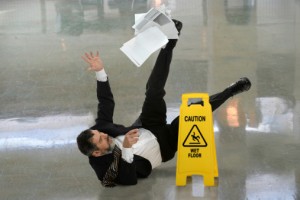 What seems like a simple mishap – slipping, tripping or stumbling and falling – can have dire consequences. A slip-and-fall accident can cause serious injuries such as a head or traumatic brain injury (TBI), a broken hip or another kind of fracture, serious back injuries or even death.
What seems like a simple mishap – slipping, tripping or stumbling and falling – can have dire consequences. A slip-and-fall accident can cause serious injuries such as a head or traumatic brain injury (TBI), a broken hip or another kind of fracture, serious back injuries or even death.
A person who has been seriously injured in a slip-and-fall accident on a property owned by someone else may have a legal claim for compensation if the fall was the result of the property owner’s negligence.
The personal injury attorneys of Ginarte Gonzalez Winograd L.L.P., are ready to investigate the circumstances of your slip-and-fall accident in the New York / New Jersey metro area and pursue compensation for medical bills and other losses you are due.
Speak With A Knowledgeable Professional
Negligence Leads to Many Slip-and-Fall Accidents
Slip-and-fall accident claims are based on property owners, managers or other responsible parties’ legal obligation to ensure their property is reasonably free of hazards or to adequately warn visitors of an existing danger.
Failing to meet this obligation may make a responsible party liable if someone is hurt in a slip-and-fall, trip-and-fall or other type of fall accident.
Slip-and-fall accidents commonly involve negligence in dealing with potential hazards such as:
 Wet floors and walkways. Property owners or managers should ensure that liquid spills such as from a broken jar in a store, puddles of tracked-in rain, snow or ice, or other accidental wetness are promptly cleaned up in a timely manner. If floors have been mopped and left to dry, “wet floor” signs should be set out to warn visitors.
Wet floors and walkways. Property owners or managers should ensure that liquid spills such as from a broken jar in a store, puddles of tracked-in rain, snow or ice, or other accidental wetness are promptly cleaned up in a timely manner. If floors have been mopped and left to dry, “wet floor” signs should be set out to warn visitors. Ice and snow. Property owners and managers are responsible for removing snow and ice that accumulates on sidewalks, steps, stairs, parking lots and other walkways. Local ordinances in New York and New Jersey require that work to shovel snow and spread salt or similar material on ice should begin within a reasonable amount of time after snowfall or other inclement weather ends.
Ice and snow. Property owners and managers are responsible for removing snow and ice that accumulates on sidewalks, steps, stairs, parking lots and other walkways. Local ordinances in New York and New Jersey require that work to shovel snow and spread salt or similar material on ice should begin within a reasonable amount of time after snowfall or other inclement weather ends. Cluttered aisles and fallen merchandise. New York and New Jersey store owners should avoid stacking merchandise in aisles or leaving supplies, equipment, trash or debris on floors and creating a tripping hazard. Store managers should also avoid large floor displays or overfilled shelves, which can result in items being knocked loose and onto floors where they become a danger.
Cluttered aisles and fallen merchandise. New York and New Jersey store owners should avoid stacking merchandise in aisles or leaving supplies, equipment, trash or debris on floors and creating a tripping hazard. Store managers should also avoid large floor displays or overfilled shelves, which can result in items being knocked loose and onto floors where they become a danger. Damaged floors and floor coverings. Property owners and managers are required to keep up with maintenance needs to ensure that torn, broken or loose carpet, space rugs, mats, floor tiles, floorboards, stair treads, etc., do not create a slip or trip hazard. On stairways, loose or damaged handrails also cause many falls.
Damaged floors and floor coverings. Property owners and managers are required to keep up with maintenance needs to ensure that torn, broken or loose carpet, space rugs, mats, floor tiles, floorboards, stair treads, etc., do not create a slip or trip hazard. On stairways, loose or damaged handrails also cause many falls. Elevators and escalators. Improperly maintained elevators and escalators can malfunction, and by stopping or starting abruptly, cause a passenger to slip, trip or be knocked down in a fall. An escalator’s hard surface and open, sometimes steep and moving stairway can make fall injuries worse.
Elevators and escalators. Improperly maintained elevators and escalators can malfunction, and by stopping or starting abruptly, cause a passenger to slip, trip or be knocked down in a fall. An escalator’s hard surface and open, sometimes steep and moving stairway can make fall injuries worse.
 Slippery flooring materials. Certain types of stone, ceramic tile, hardwood, glass, concrete or other smooth flooring materials can create a higher risk of slip-and-fall accidents than other building materials. Over-polishing floors and walkways can also increase slip-and-fall hazards. In accident cases, liability may lie with architects or builders responsible for design defects or with cleaning or janitorial contractors who were negligent.
Slippery flooring materials. Certain types of stone, ceramic tile, hardwood, glass, concrete or other smooth flooring materials can create a higher risk of slip-and-fall accidents than other building materials. Over-polishing floors and walkways can also increase slip-and-fall hazards. In accident cases, liability may lie with architects or builders responsible for design defects or with cleaning or janitorial contractors who were negligent. Inadequate lighting. Dark hallways or stairways make it difficult to see steps or obstacles, or to recognize changes in the floor’s surface. Moving from a lighted area into darkness causes temporary vision loss that can lead to a fall. Business managers and other property owners should install and maintain proper lighting in public areas.
Inadequate lighting. Dark hallways or stairways make it difficult to see steps or obstacles, or to recognize changes in the floor’s surface. Moving from a lighted area into darkness causes temporary vision loss that can lead to a fall. Business managers and other property owners should install and maintain proper lighting in public areas.
 Landscape hazards. Outdoors, landscape materials such as pebble-size gravel, mulch and loose sand can create slipping hazards if they are scattered from beds onto walkways. Landscapers and other workers must take care to not leave unfinished work, like holes or other uneven surfaces, unlabeled or unguarded, or tools and equipment lying about to create tripping hazards.
Landscape hazards. Outdoors, landscape materials such as pebble-size gravel, mulch and loose sand can create slipping hazards if they are scattered from beds onto walkways. Landscapers and other workers must take care to not leave unfinished work, like holes or other uneven surfaces, unlabeled or unguarded, or tools and equipment lying about to create tripping hazards. Damaged sidewalks. Cracks in paving stones, loose pavers or gaps between sidewalk segments pose a risk of tripping or slipping and falling. Property owners should be aware of the state of their grounds and make repairs or post warning signs when necessary.
Damaged sidewalks. Cracks in paving stones, loose pavers or gaps between sidewalk segments pose a risk of tripping or slipping and falling. Property owners should be aware of the state of their grounds and make repairs or post warning signs when necessary. Ditches and potholes. Holes, trenches and other openings in grounds or parking lots and other paved areas should be filled, covered or well-marked with warning signs and/or fencing.
Ditches and potholes. Holes, trenches and other openings in grounds or parking lots and other paved areas should be filled, covered or well-marked with warning signs and/or fencing.
Speak With A Knowledgeable Professional
Contact an Experienced NY / NJ Slip-and-Fall Accident Attorney
Hundreds of slip-and-fall accidents occur every year in New York and New Jersey because property owners fail in their duty to ensure the safety of visitors to stores, offices, theaters, parks and other businesses and private homes. Individuals who have been injured because of property owners or managers’ negligence deserve compensation for their medical bills and other losses.
The slip-and-fall accident lawyers of the Ginarte law firm are ready to help you obtain justice if you or a loved one has been seriously injured in a fall that was caused by someone else’s negligence. Our attorneys have protected the rights of countless accident victims in New York and New Jersey and are ready to use their 150+ years of combined experience to get you the justice you deserve.
Contact us by phone or through our online form today for a free initial consultation about a potential claim. Remember, there is no charge to talk with our accident lawyers and we collect fees only if you win your case.
Source:
- Slips, Trips and Falls, National Safety Council

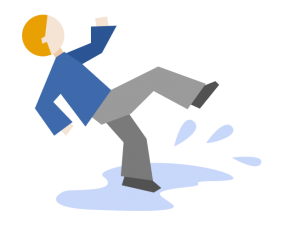 Wet floors and walkways. Property owners or managers should ensure that liquid spills such as from a broken jar in a store, puddles of tracked-in rain, snow or ice, or other accidental wetness are promptly cleaned up in a timely manner. If floors have been mopped and left to dry, “wet floor” signs should be set out to warn visitors.
Wet floors and walkways. Property owners or managers should ensure that liquid spills such as from a broken jar in a store, puddles of tracked-in rain, snow or ice, or other accidental wetness are promptly cleaned up in a timely manner. If floors have been mopped and left to dry, “wet floor” signs should be set out to warn visitors.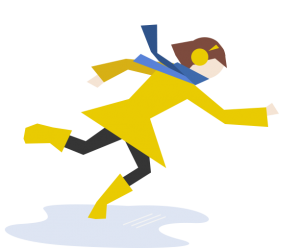 Ice and snow. Property owners and managers are responsible for removing snow and ice that accumulates on sidewalks, steps, stairs, parking lots and other walkways. Local ordinances in New York and New Jersey require that work to shovel snow and spread salt or similar material on ice should begin within a reasonable amount of time after snowfall or other inclement weather ends.
Ice and snow. Property owners and managers are responsible for removing snow and ice that accumulates on sidewalks, steps, stairs, parking lots and other walkways. Local ordinances in New York and New Jersey require that work to shovel snow and spread salt or similar material on ice should begin within a reasonable amount of time after snowfall or other inclement weather ends.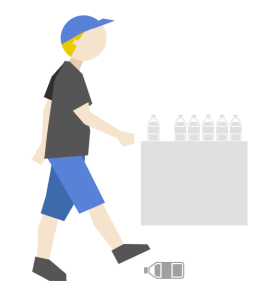 Cluttered aisles and fallen merchandise. New York and New Jersey store owners should avoid stacking merchandise in aisles or leaving supplies, equipment, trash or debris on floors and creating a tripping hazard. Store managers should also avoid large floor displays or overfilled shelves, which can result in items being knocked loose and onto floors where they become a danger.
Cluttered aisles and fallen merchandise. New York and New Jersey store owners should avoid stacking merchandise in aisles or leaving supplies, equipment, trash or debris on floors and creating a tripping hazard. Store managers should also avoid large floor displays or overfilled shelves, which can result in items being knocked loose and onto floors where they become a danger.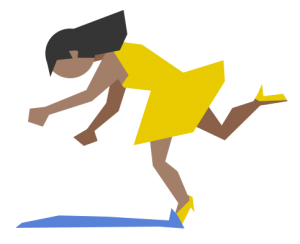 Damaged floors and floor coverings. Property owners and managers are required to keep up with maintenance needs to ensure that torn, broken or loose carpet, space rugs, mats, floor tiles, floorboards, stair treads, etc., do not create a slip or trip hazard. On stairways, loose or damaged handrails also cause many falls.
Damaged floors and floor coverings. Property owners and managers are required to keep up with maintenance needs to ensure that torn, broken or loose carpet, space rugs, mats, floor tiles, floorboards, stair treads, etc., do not create a slip or trip hazard. On stairways, loose or damaged handrails also cause many falls.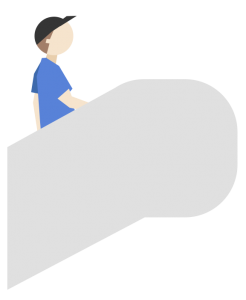 Elevators and escalators. Improperly maintained elevators and escalators can malfunction, and by stopping or starting abruptly, cause a passenger to slip, trip or be knocked down in a fall. An escalator’s hard surface and open, sometimes steep and moving stairway can make fall injuries worse.
Elevators and escalators. Improperly maintained elevators and escalators can malfunction, and by stopping or starting abruptly, cause a passenger to slip, trip or be knocked down in a fall. An escalator’s hard surface and open, sometimes steep and moving stairway can make fall injuries worse.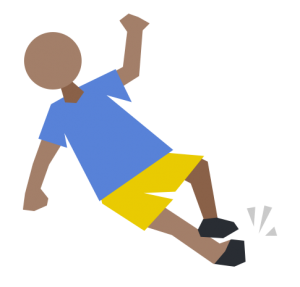 Slippery flooring materials. Certain types of stone, ceramic tile, hardwood, glass, concrete or other smooth flooring materials can create a higher risk of slip-and-fall accidents than other building materials. Over-polishing floors and walkways can also increase slip-and-fall hazards. In accident cases, liability may lie with architects or builders responsible for design defects or with cleaning or janitorial contractors who were negligent.
Slippery flooring materials. Certain types of stone, ceramic tile, hardwood, glass, concrete or other smooth flooring materials can create a higher risk of slip-and-fall accidents than other building materials. Over-polishing floors and walkways can also increase slip-and-fall hazards. In accident cases, liability may lie with architects or builders responsible for design defects or with cleaning or janitorial contractors who were negligent.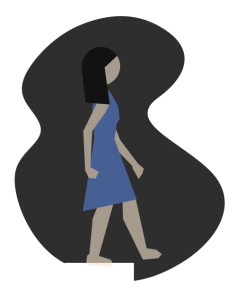 Inadequate lighting. Dark hallways or stairways make it difficult to see steps or obstacles, or to recognize changes in the floor’s surface. Moving from a lighted area into darkness causes temporary vision loss that can lead to a fall. Business managers and other property owners should install and maintain proper lighting in public areas.
Inadequate lighting. Dark hallways or stairways make it difficult to see steps or obstacles, or to recognize changes in the floor’s surface. Moving from a lighted area into darkness causes temporary vision loss that can lead to a fall. Business managers and other property owners should install and maintain proper lighting in public areas.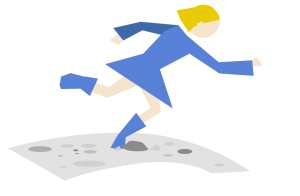 Landscape hazards. Outdoors, landscape materials such as pebble-size gravel, mulch and loose sand can create slipping hazards if they are scattered from beds onto walkways. Landscapers and other workers must take care to not leave unfinished work, like holes or other uneven surfaces, unlabeled or unguarded, or tools and equipment lying about to create tripping hazards.
Landscape hazards. Outdoors, landscape materials such as pebble-size gravel, mulch and loose sand can create slipping hazards if they are scattered from beds onto walkways. Landscapers and other workers must take care to not leave unfinished work, like holes or other uneven surfaces, unlabeled or unguarded, or tools and equipment lying about to create tripping hazards.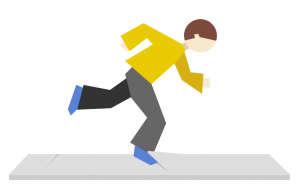 Damaged sidewalks. Cracks in paving stones, loose pavers or gaps between sidewalk segments pose a risk of tripping or slipping and falling. Property owners should be aware of the state of their grounds and make repairs or post warning signs when necessary.
Damaged sidewalks. Cracks in paving stones, loose pavers or gaps between sidewalk segments pose a risk of tripping or slipping and falling. Property owners should be aware of the state of their grounds and make repairs or post warning signs when necessary.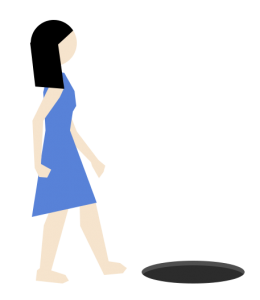 Ditches and potholes. Holes, trenches and other openings in grounds or parking lots and other paved areas should be filled, covered or well-marked with warning signs and/or fencing.
Ditches and potholes. Holes, trenches and other openings in grounds or parking lots and other paved areas should be filled, covered or well-marked with warning signs and/or fencing.